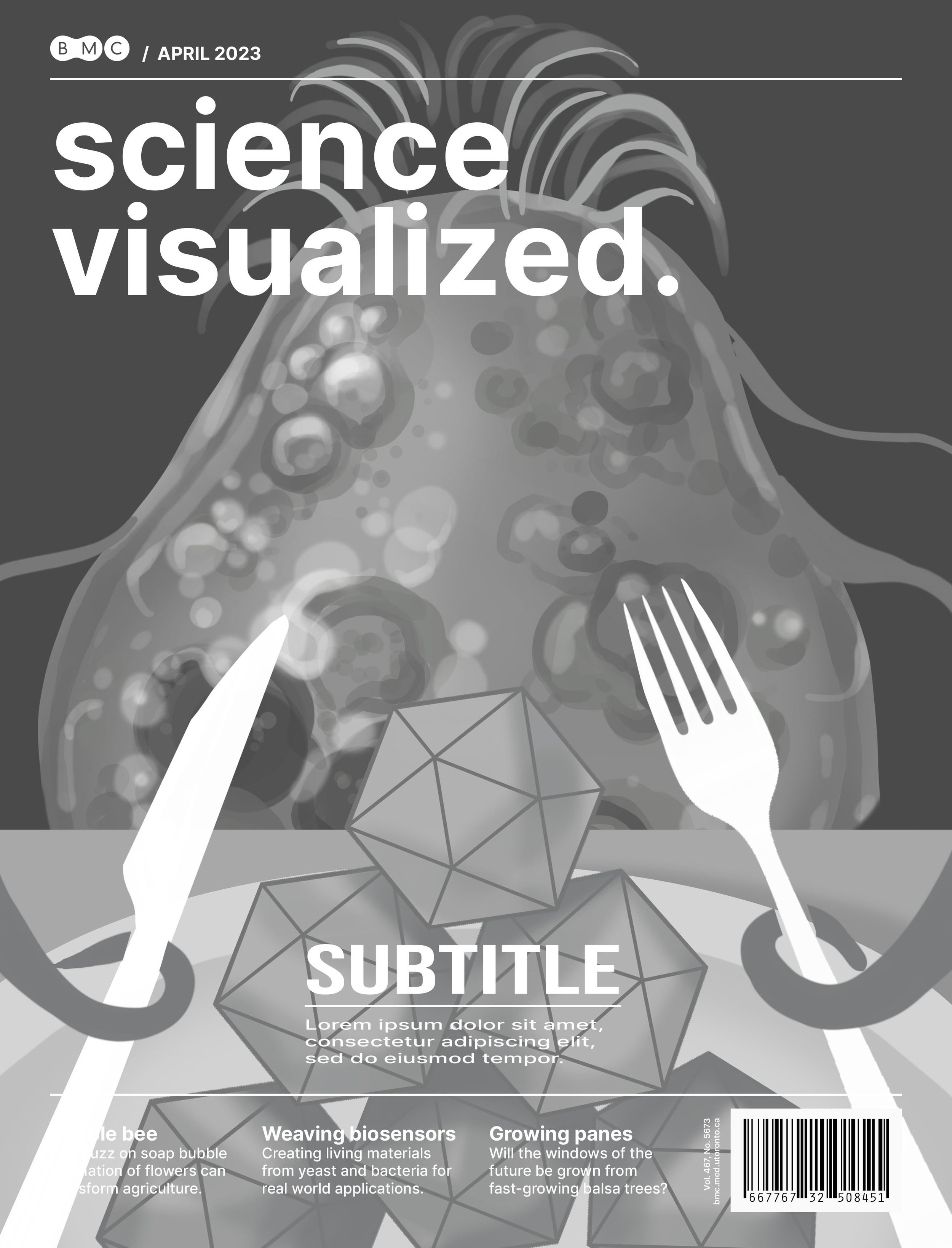Hot New Diet: Virovory
Editorial Cover
-
Maya, Adobe Photoshop and Illustrator
-
To produce an editorial cover using Maya that highlights a new scientific discovery and engages the audience
-
Professor Shay Saharan
A ciliate microbe known as Halteria has been deemed the first discovery of “virovory”, or the active consumption of viruses. Previously this consumption was deemed calorically unimportant and unable to support the population growth of its consumers. However, scientists have discovered that virovory may be a critical source of energy transfer in the food chain given that Halteria is able to grow and reproduce even when only given viruses as a food source. This development could redefine food web models and alter the perception of how selective pressures influence the evolution of viruses.The goal of the assignment was to produce an editorial cover with 3D components that highlighted a new scientific discovery. My concept was to place the microbe at the dinner table to engage the viewers with familiar imagery and make the scene more relatable. Halteria sits poised and ready to consume the viruses which appear almost candy-like. Process
As always, my process begins with research and sketches. I compiled images of the actual Halteria to inspire my microbe character and various virus references. My references can be viewed here:
Editorial Cover ReferencesConcept Sketches
Comprehensive Sketch
Initially I planned to be more realistic in relationship to the source article by only showing chloroviruses (the icosahedral shapes seen in the concept sketches). I then realized that they might not read as viruses right away to the general public for whom this magazine is intended, so I decided to depict an array of viruses on the plate. The color scheme and overall layout is very similar to the final image.Sculpting in Maya
Considering this was my first project in Maya, I wanted to focus on strong recognizable silhouettes rather than precise detail. I sculpted the fork, knife, and plate first as they were the most straight-forward elements. Next were the viruses, made using many different MASH networks. This was difficult when MASH didn't behave how I wanted it to, but I made it work!Final render pre-editing
Creating the microbe was fairly simple, until I had to make the cilia arms wrap around the utensils. I tried numerous methods with not much success. Ultimately I was able to connect a helix to an extruded curve to make the shape, then I used the modeling tools to make the helix portion hug the utensils. After 7 hours of rendering I finally had my final image that luckily didn't require too many edits. The editing I did in post mostly consisted of exaggerating light and shadow and adding a slight rim light behind the viruses to make them pop.










